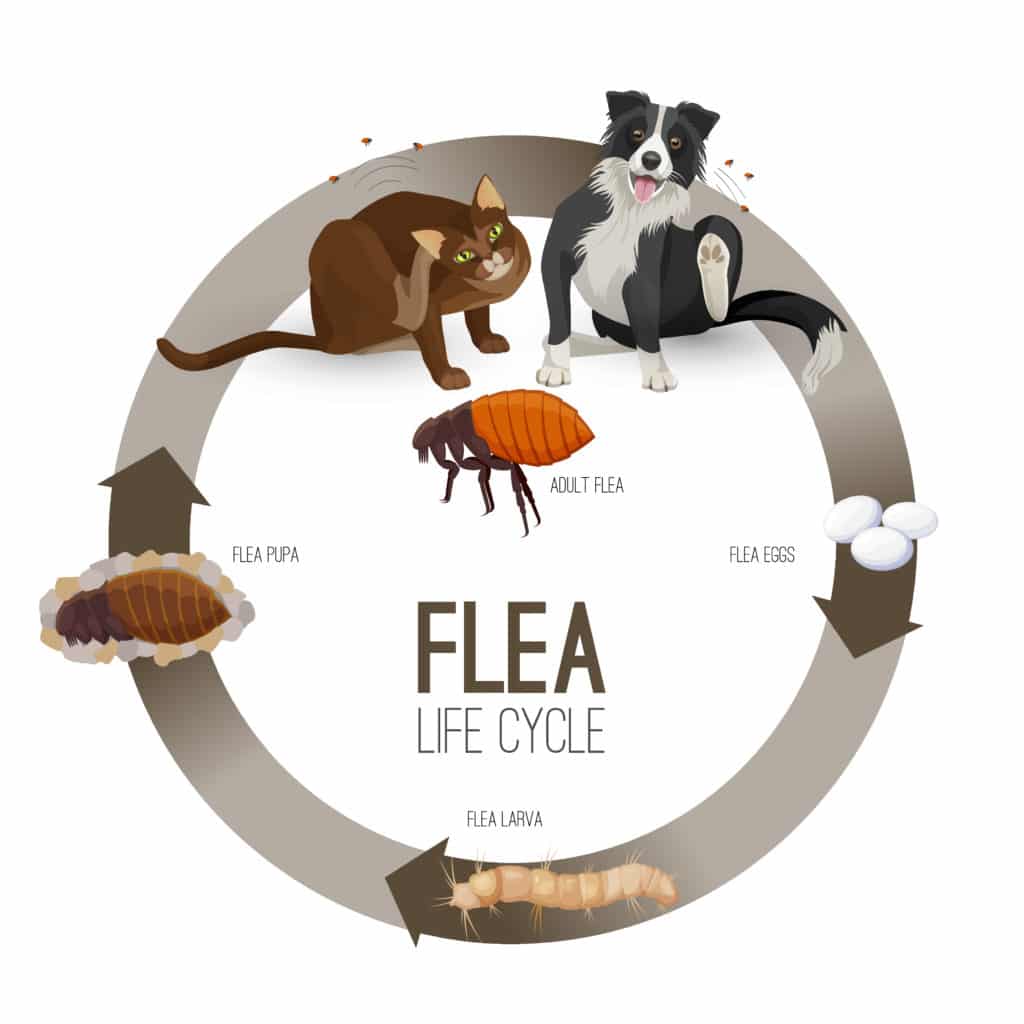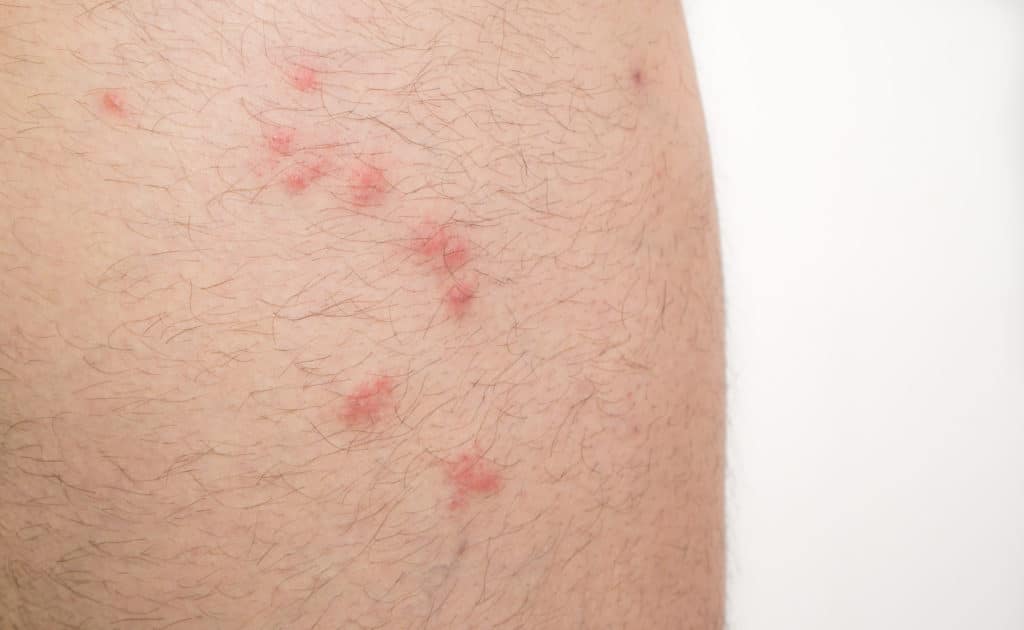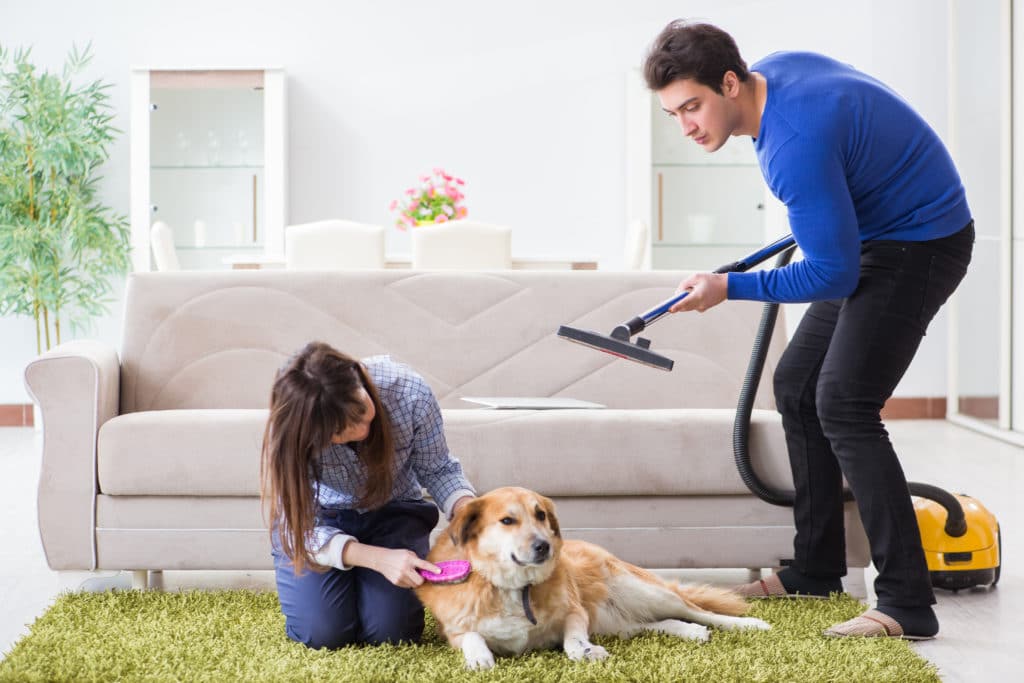
Flea Bites: Identifying and Managing Unwanted Pests
Nothing puts a damper on summer fun like insect bites. But if you’re still getting itchy red bumps after going indoors, you may be dealing with flea bites.
Fleas like to hitch a ride on furry pets. When your dog lies in the yard, he’s an easy target. After your pet comes inside, you’re an easy target, too.
If you need help debugging your home, contact Environmental Pest Management today. Our pest control experts will provide a solution that works for you. Get your free quote today.
The Basics About Fleas

Fleas are parasites that hop onto any warm-blooded host available. Their strong claws make them difficult to dislodge. Hair or fur can make them difficult to spot.
Fleas have strong hind legs that give them the ability to jump about 12 inches vertically. Bites on your lower legs and feet are often caused by fleas.
Fleas reproduce by laying eggs. Eggs can take anywhere from 2 days to two weeks to hatch.
After hatching, flea larvae grow in dark, humid environments. The dark and humidity under a carpet is a perfect habitat for them.
After another 1-2 weeks, the flea larva spins itself into a cocoon. It emerges as an adult about four days later.
The adult flea lives about 2-3 months and may lay about 5000 eggs in that time. An adult flea can bite and feed up to 400 times a day.
How Do I Know If I Have Flea Bites?

Fleas are tiny – about the size of the tip of a pencil. They are small enough that you might not notice them if you aren’t looking for them.
Fleas can’t fly, but they jump. This little bug packs a big bite. A flea will continue to bite until it is gorged and leave a raised, itchy welt.
Take a good look at your pet. Brush his fur and look for small, black dots.
Unlike other bug bites, flea bites are likely to occur on your lower legs and feet. A series of red bumps may be the outcome of walking through a flea-infested area.
Scratching the bite may cause increased itching. Treat bites with an itch cream containing hydrocortisone. Many creams are available without a prescription.
Though uncommon, flea bites cause an allergic reaction in some people. Symptoms range from hives to difficulty breathing. If you have severe itching, swelling, or shortness of breath, seek medical attention.
Flea bites can last up to three weeks but normally disappear within several days if you refrain from scratching them.
Fleas can transmit diseases, including plague, tapeworms, and typhus, but this is very unusual. It is more likely that scratching those itchy red spots will break the skin, resulting in an infection.
What Do I Do If I Have Fleas?

If your home is infected, there are steps you can take to get rid of fleas:
1.Treat your pet and your home at the same time. Bug control requires a blitz attack. If you treat Rover this weekend but don’t vacuum until next weekend, bugs will re-infest in short order. Treat your pet with a flea shampoo, and follow up with preventive treatment. Talk to your veterinarian about the best product for your pet.
2. Vacuum. Do the floors, the furniture, the baseboards, and any other small areas of your home that fleas or their larvae could be tucked into. Take your vacuum outside to empty it.
3. Steam clean the carpets.
4. Wash all the bedding in hot water, including your pet beds and blankets. Dry them at the highest setting the items can handle.
5. Apply an insecticide that kills both adult fleas and eggs. Wear gloves and a face mask, and leave the area until the spray dries.
6. Vacuum again to get any remaining fleas or eggs.
Keep in mind that flea larvae may be dormant for weeks or months, waiting until the temperature is ideal. If you miss any eggs, you could be starting this process again soon.
Fleas In Your Yard

If you’ve just eliminated fleas from your home, you don’t want your pet to carry fleas right back in. Don’t wait to discover another round of flea bites. Take action to keep fleas out of your yard.
Fleas prefer shady, humid spaces. Your pet might also consider that shady spot a good place to relax and nap.
If Fido has fleas, and he likes to lie under the elm tree, odds are you will find fleas living under that tree.
Take these steps to reduce insect bites in your yard and new infestations in your home:
- Mow the grass. Fleas like to hide in tall grass. Grass that is less than 2 inches tall deters their natural predators, so aim for 3-4 inches.
- Clean out any areas of damp leaves or other debris. Fleas love to hide and lay eggs in these deposits.
- Don’t overwater your yard. Fleas love soggy ground and compost.
- Apply a flea killing treatment. There are several sprays and pellets on the market.
If you’re uncomfortable using an insecticide, a natural alternative is to release the fleas’ natural predators into the environment. Nematodes can be purchased at your local garden store. These tiny organisms live in soil and help control many garden insects.
- Add cedar mulch around plants and in shady areas. Cedar is a natural flea deterrent.
Once your flea infestation is under control, apply a preventive treatment o a regular basis to keep them from coming back.
Consider Professional Help

Flea control requires a targeted approach.
Be flea-free without tearing your hair out (or shaving your pet’s hair off.) Contact Environmental Pest Management today. We’ll provide a solution that takes the stress off. Get your free quote today.
